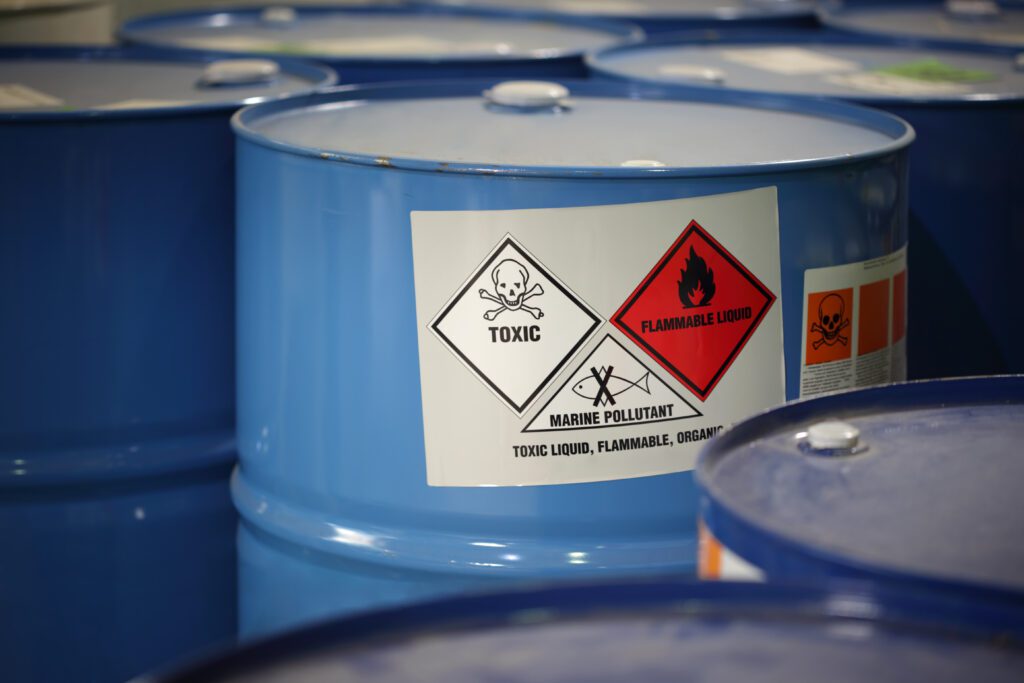The importance and accuracy of Safety Data Sheets (SDSs) is not only vital to proper hazard communication for the health and safety of employees, but also for regulatory reporting compliance. If you operate in North America, your SDSs will need to align with the Globally Harmonized System of Classification and Labeling of Chemicals (GHS), which is a harmonized system of labeling chemicals for easier communication.
A product’s chemical composition and physical properties contained in its SDS are used to generate the information needed to meet government regulations. If a product’s SDS is inaccurate, any reports generated from that SDS will also be inaccurate. This can negatively impact regulatory reports by either under or over reporting chemical usage, which can especially be an issue when permits are issued for a specific quantity of hazardous chemicals.
If your products’ SDSs are required to align with GHS standards, then having accurate additional information is crucial to meet compliance requirements and maintain the permits necessary for your business to operate.
What is GHS?
GHS provides a common and coherent approach to classifying chemicals and communicating hazard information on labels and SDSs. The Occupational Safety and Health Administration (OSHA) has determined that these modifications in how chemical data is reported will significantly reduce costs and burdens. They will also improve the quality and consistency of information provided to employers and employees regarding chemical hazards and associated protective measures.
Within GHS, all employers with hazardous chemicals must provide labels and SDSs. They must also train workers on how to handle chemicals safely.
History of GHS
In 1974, OSHA developed the Hazard Communication Standard (HCS). The purpose of HCS was to create an expectation that companies would notify employees of the hazards associated with the chemicals they may be exposed to and to ensure the safe use, handling, and disposal of those hazardous chemicals.
Since then, HCS has aligned with GHS in order to have a single set of harmonized criteria for classifying chemicals according to their health and safety hazards. It also specifies hazard communication guidelines for labeling and SDSs.
GHS is not a regulation. Rather it is a set of recommendations that an authority such as OSHA can adopt. GHS is a voluntary international system; there are no treaty obligations. However, when counties adopt GHS, there will be binding regulatory changes for that country’s industry and manufacturing facilities.
GHS has been implemented in all of North America. On May 25, 2012, it was adopted by the United States within the Federal Register 29 CFR § 1910.1200 – Hazard Communication Standard, known as HazCom 2012.
Canada was the second North American country to adopt GHS, where it is known by Hazardous Products Regulations (HPR) WHMIS 2015. In 2018, Mexico accepted GHS, and their standard is outlined in regulation NOM-018-STPS-2015, Harmonized System for the Identification and Communication of Hazards and Risks of Hazardous Chemicals in the Workplace.
SDS and GHS
Since GHS has been adopted, all manufacturers have had to reevaluate and update their SDSs to comply with GHS standards. While the changes to GHS were challenging, the new unified format has made it easier to understand basic hazards of a product by the use of pictograms and has improved overall hazardous communication within the workplace.
To comply with GHS standards, SDSs must now include the following 16 sections:
Identification
This section identifies the chemical, names recommended uses, and provides contact information.
Hazard(s) Identification
This section addresses the particular hazards associated with the chemical on the SDS. It includes the hazard classification of the chemical, the signal word, hazard statement(s), pictograms, precautionary statement(s), and other hazard descriptions.
Composition/Information on Ingredients
This section contains information on the ingredients contained in the product. This includes substances, mixtures, and if any chemical information is withheld because of trade secrets.
First-Aid Measures
This section explains how to treat a person that has come in contact with the hazardous chemicals.
Fire-Fighting Measures
This section contains any information fire-fighting authorities may need to know when fighting a fire involving the chemical.
Accidental Release Measures
The section explains how to respond to and contain a spill or leak of a chemical.
Handling and Storage
This section details how to safely handle and store the product.
Exposure Control/Personal Protection
This section details engineering controls and personal protective measures that can minimize worker exposure to a hazardous chemical. It also includes exposure limits assigned to the product.
Physical and Chemical Properties
This section identifies the physical and chemical properties of the substance as a whole. Examples include appearance, odor, flash point, pH, specific gravity, evaporation rate, and flammability.
Stability and Reactivity
This section provides more information on the chemical properties of the substance, including how the chemical may react with other substances and if the chemical is stable under normal conditions.
Toxicological Information
This section explains how a person exposed hazardous chemicals may be affected. This includes the pathways for exposure and what symptoms may occur.
Ecological Information
This section explains how the chemical may impact the environment if it were to be released.
Disposal Considerations
This section explains how the chemical should be safely disposed of after usage according to all local, state, and federal laws.
Transport Information
This section contains information necessary for shipping and/or transporting the chemical.
Regulatory Information
This section lists all regulations the chemical is associated with for reporting purposes and Right-to-Know information.
Other Information
This section contains information about the preparation of the SDS itself, including the date it was created and the dates any revisions were made.
For more detailed information on what each of these SDS sections should include, see information from OSHA.
Get SDS Management Support
Making sure your SDSs are aligned to GHS standards is not only essential for compliance, it also will improve safety and communication in your workplace. For help with your SDS management, contact Tetra Tech’s compliance experts at [email protected]. We can evaluate the information in your SDSs and perform a technical review of the data to help align your SDSs with GHS standards. By having GHS compliant SDSs and performing technical reviews with help from Tetra Tech, companies can feel secure in the accuracy of their data.






